Welcome to another post of my strange animals series where you get to meet some of the weirdest, coolest, and craziest animals in the world.
So, today I would like to share with you guys 3 of the strangest animals I "discovered" the past week. Hopefully, you will find them as impressive as I did. Are you ready? Let's go:
1. Jewel Caterpillar
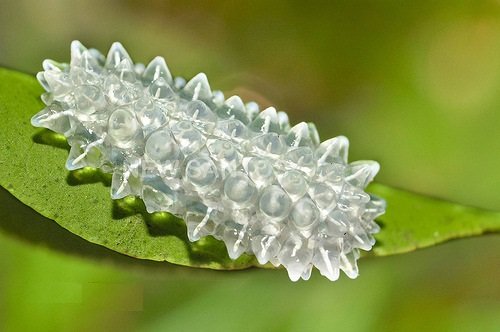
Jewel Caterpillar (credit)
When a friend messaged me this photo I was like, "this shit can't be real, it's got to be photoshopped". And then he messaged me this video:
This stunning creature is the caterpillar stage of Acraga coa, a moth found in southern Mexico, Belize, Honduras, Guatemala, El Salvador, Costa Rica and Panama. [1]
A. coa belongs to a family of moths, called Dalceridae. I highly suggest you to check google images for "Dalceridae caterpillar", as each species has some pretty amazing colors and patterns.
Despite its' appearance that screams of aposematism, research has shown that this caterpillar doesn't sting and is not poisonous. [2] Perhaps, as one youtuber from the video above commented, it's main defense "is being fabuloussss"!
In case you wonder, the moth is also a bit weird looking:
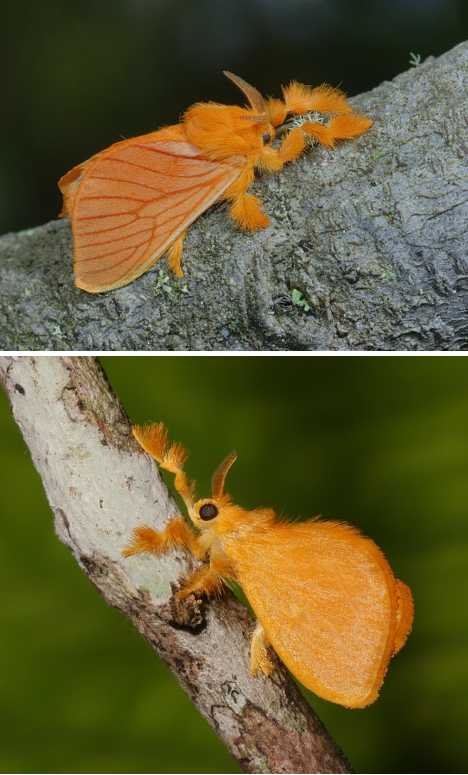
Acraga coa moth (credit)
Now, let's move on to the next creature!
2. Rainbow Grasshopper
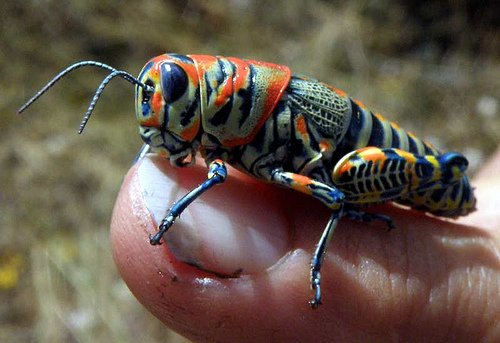
Rainbow Grasshopper (credit)
This is another creature that activated my "this is fake" alarm. Again, I was wrong!
Not surprisingly, this grasshopper is commonly known as the.. rainbow grasshoper. Scientifically described as Dactylotum bicolor, some other common names it comes by include the painted grasshopper and the barber pole grasshopper. The species is native to the United States, Canada and northern Mexico. [3]
This is a relatively small grasshopper, with an average length of 2 cm for males and 3,5 cm for females. Here's a quick video of this beautiful creature before moving to the next one:
3. Pinocchio Lizard
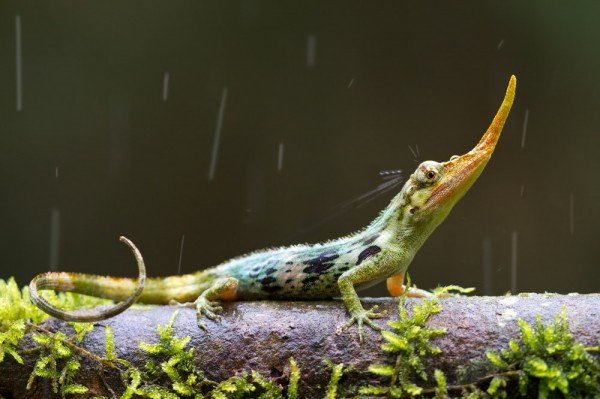
Pinocchio lizard (credit)
The last strange creature for today is the Pinocchio lizard, a small lizard best known for the long protrusion males have on the end of their nose.
Scientifically described as Anolis proboscis, the species is also known as Proboscis anole and Ecuadorian horned anole. It is listed as endangered and is only known to inhabit a small stretch of vegetation along an Ecuadorian highway. [4]
Interestingly, the species was first described in 1956 by a male specimen that had been found in Ecuador in 1953. It was reported a few times again in the coming years and then it mysteriously vanished. Many thought the species had gone extinct, as there were no reports for more than 40 years. That was until 2005, when a group of bird-watchers near Mindo spotted and photographed an individual. [5]
Here's a video of the creature:
Adults are about 5 to 7,6 cm long. The elongated structure, called proboscis, males possess starts from the middle of the snout and is about 1-2 cm long and is believed to be used in courtship displays. [4]
The End
What? Didn't have enough strange animals for today? Ok, here's a random cute horseshoe crab baby:
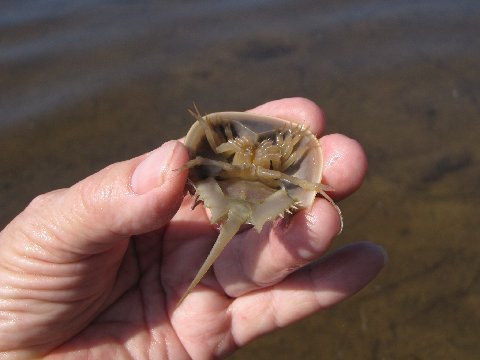
Horseshoe Crab Baby (credit)
More Strange Animals
Here are some of my latest posts. If you like reading about strange animals I think you will like them:
- The Weird Looking Cantor's Giant Softshell Turtle
- How To Hypnotize Your Chicken!
- Gasteracantha: Tiny Spiders From Hell!
- 10 Unusual Vegetables & Fruits I Plan To Grow Next Season (Part 1)
- 7 Horrifying Micro-Monsters That Will Haunt Your Dreams
- New Study Reveals Alligators Feed On Sharks!
- Greta oto: The Butterfly With The Transparent Wings
- Crickets, Grasshoppers And Other Disgusting Things Are An Excellent Source Of Iron (And Other Minerals!)
References
- Wikipedia.org/wiki/Acraga_coa
- Blogs.scientificamerican.com/observations/the-biology-of-the-translucent-jewel-caterpillar-the-nudibranch-of-the-forest/
- Wikipedia.org/wiki/Dactylotum_bicolor
- Wikipedia.org/wiki/Anolis_proboscis
- Nationalgeographic.org/2013/10/08/pinocchio-lizard-spotted/
 Steemstem & SteemitEducation
Steemstem & SteemitEducation
Steemstem is the go-to place for science on Steemit. Check it out at @steemstem or visit the #steemSTEM channel. A big thank you also goes to the guys from @steemiteducation for supporting my content!
Greek Community
A final big thanks goes to my fellow greeks for their support and love. Follow the greek-trail or check the facebook page for more greek content!




